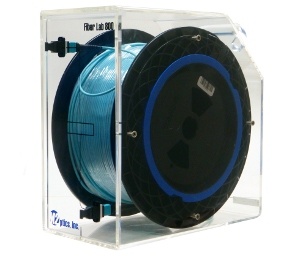Using Fiber Network Simulation to Certify New Optical Equipment
Whether you are an electric utility, cable or networking company, bank, telecommunications provider, or even a local government, military installation, or a university, fiber optic cable has become a critical part of your infrastructure. You’ve likely invested tens of thousands of dollars to install or lease the fiber in your buildings, across your campuses, or for connecting geographically dispersed sites in your organization. With such a significant financial investment, it is critical to ensure that the equipment connected to the fiber optic network performs as expected in your real-world environment. M2 Optics offers options that simplify and streamline the testing process.
Why Simulate Your Fiber Network?
As your business explores and selects vendors for routers, transceivers, switches, and other gear that will connect to the fiber optic network, you may find yourself reviewing data sheets or even visiting a vendor’s laboratory where they demonstrate their capabilities and features like performance, assurance and agility on a network. While there are many highly reputable device vendors manufacturing great equipment, it is important to remember that the results presented may be based on a specific testing or demonstration infrastructure, which may or may not exactly match your own specific network infrastructure.
For example, a simple difference in fiber type between a test/demo environment and the fiber deployed in your network can produce differing results. A demonstration setup using 10km of standard single mode fiber (G.652D) will produce a different latency value than if you have deployed 10km of a low-dispersion (G.655) fiber in your actual network. (Note: This is due to each fiber type having a different Index of Refraction). While that slight difference in time delay may not matter if you are a college campus providing internet to students, it might be significant if you are a financial institution seeking to minimize latency across the entire network where even nanosecond or picosecond differences are critical.
Since equipment manufacturers provide accurate data and specifications for their devices, the emphasis here is on taking the necessary steps to replicate the real-world network to determine which of the quality devices will perform best for your unique fiber infrastructure and engineering goals.
Simulating Your Real-World Fiber Links
Once you have narrowed down the list of quality vendors and want to start independently testing or qualifying gear, leveraging fully-customized network simulation solutions from M2 Optics as part of your internal certification process can assure that the device delivers the reliability, performance, and speed you expect to achieve in your deployment.
 |
Portable Fiber Lab MPO with 100m of OM3, 12-fiber cable |
Offering virtually all fiber types at user-specified lengths in a variety of rack-mount and portable platforms, M2 Optics makes it easy to exactly simulate your own network in the most space-efficient and professional manner. In addition, you can rely on consistent performance results that match those of your actual network while enhancing your lab and testing capabilities.
Maximize Your Investment
Testing your routers, switches, transceivers, or other optical gear using Fiber Labs that exactly simulate your real-world fiber optic network will help provide peace of mind for your engineering team that is working hard to ensure your gear will achieve the intended performance results once deployed in the field. Utilizing a high-value fiber test setup will have a direct, positive impact on helping to deliver a strong return on your network investment.
Learn more about best practices for simulating a fiber optic network by downloading the free whitepaper today!





